This week I have another problem from Milan Vukcevich for you. It was published in 1998. The position below calls for white to move and mate in five.

White has two main ideas in this position. One is to move his bishop to f4, with the plan of giving mate on d6. The other is to move his knight to f4, with the plan of giving mate on d5.
For his part, black has two main responses to these ideas. By moving his bishop to f7, black prevents the knight mate on d5. And by moving his knight to f7, black prevents the bishop mate on d6.
But here's the thing. Black's defenses obstruct each other. The black knight and bishop both need access to f7 to play their defenses. This suggests a plan for white. He will start by playing one of his threats, and when black obstructs himself by moving one of his pieces to f7, white will then switch to his other threat.
Of course, there is the problem that white's threats obstruct each other as well, since both white pieces need access to f4. But maybe there's a way around that.
White can try 1. Bf4, forcing 1. ... Nf7.
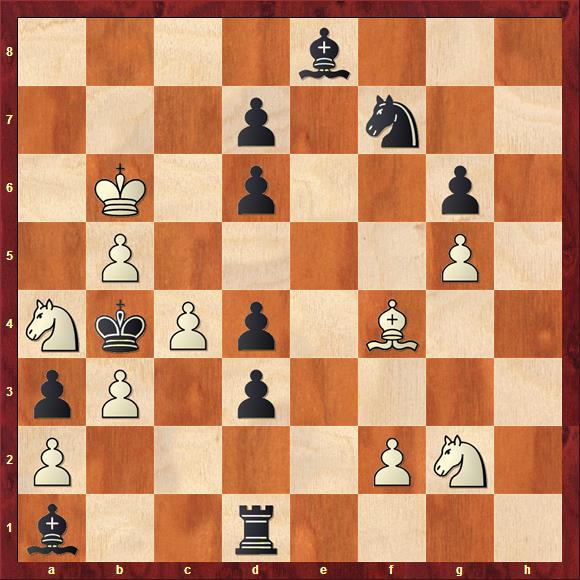
White now needs to vacate f4 for his knight, without allowing black too much freedom. He can do that by giving check! Play will now continue 2. Bd2+ Rxd2 3. Nf4,
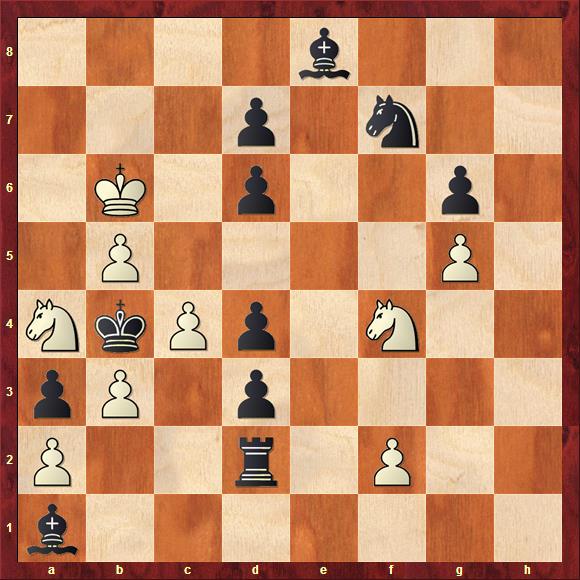
but now he gets the bad news. Black has acquired the defense 3. ... Rxa2, providing a flight square on b3 for his king. White now has no mate. Drat!
So let's try it the other way. White can begin with 1. Nf4, forcing 1. ... Bf7.

Once again, white must vacate f4 by giving check. So play continues 2. Nxd3+ Rxd3 3. Bf4,
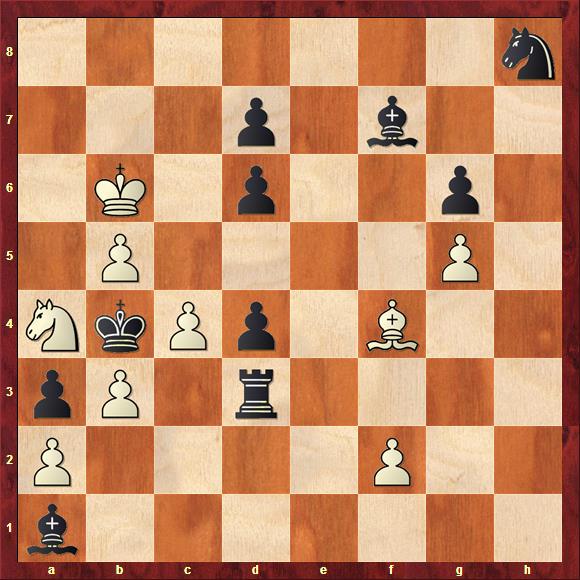
but now there's more bad news. Black has acquired the defense 3. ... Rxb3. Now the black king can escape to c4, and there is no mate. Double drat!
What to do? Black seems to have everything under control, so white needs a new idea. But here's the thing. If you look closely, you will see that black is close to zugzwang. Black cannot move either piece to f7, since that will invite one of white's threats from f4. Moving the d pawn allows the white knight to give mate on d3 after moving to f4. And moves by the black rook will give up control of the d file. That leaves only the black bishop in the corner to deal with.
This suggests that white just needs a waiting move. And he has one! He can play 1. Ka6!
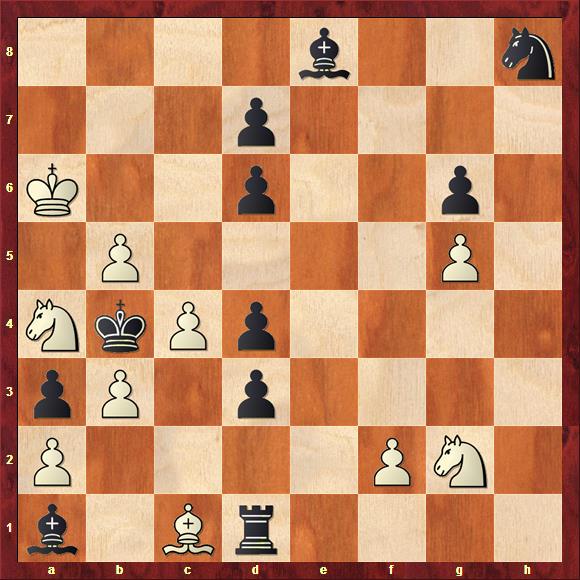
We have already established that black's only moves that do not obviously lose are with the bishop in the corner. So let's try 1. ... Bb2:
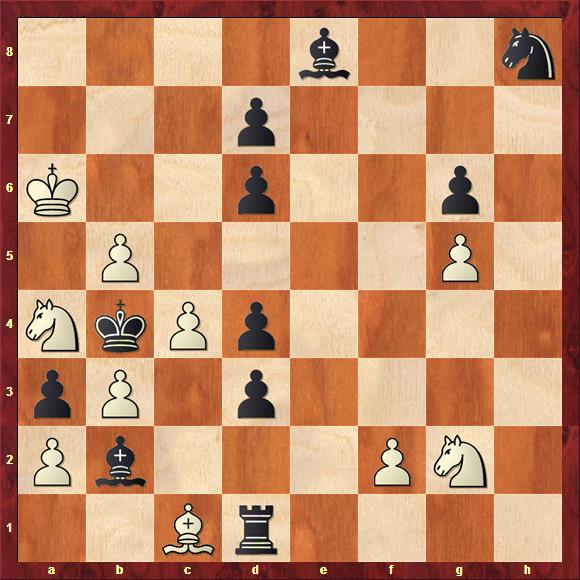
Do you see the point? This interferes with the second rank. Suddenly white's bishop plan works! He plays 2. Bf4! Nf7 3. Bd2+ Rxd2 4. Nf4,
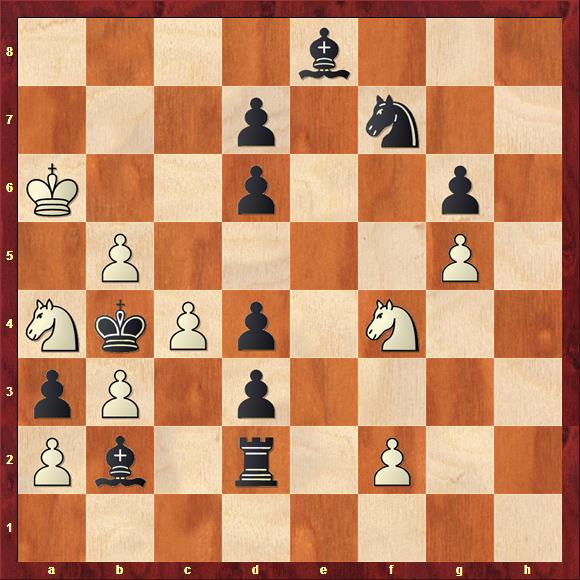
and since black has lost his Rxa2 defense, he is helpless against 5. Nd5 mate on the next move.
Having seen that, you will probably see immediately what goes wrong with black's other move 1. ... Bc3:
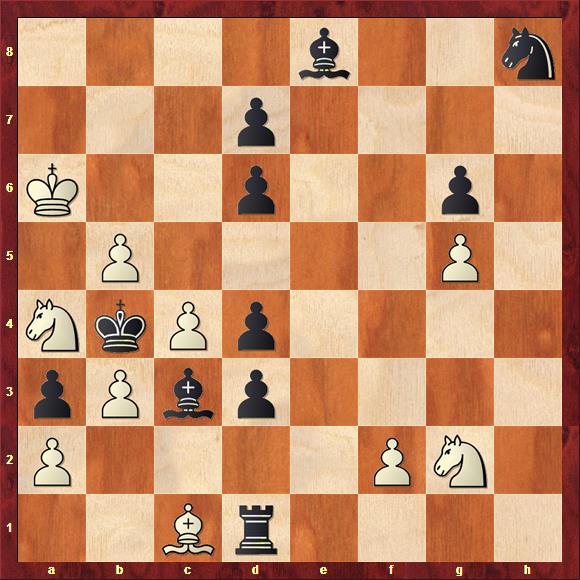
This time we have an interference on the third rank. So white continues 2. Nf4! Bf7 3. Nxd3+ Rxd3 4. Bf4,

and since black no longer has his Rxb3 defense, he is helpless against 5. Bxd6 mate on the next move.
I think that's pretty clever! What do you think? As it happens, this only received the second prize in its tourney. That first prize winner must have been a real barn burner. Vukcevich had a real knack for finding clear, elegant presentations of difficult ideas.
See you next week!

What a great explanation of this problem! Really. Walks us right through a maze of "almosts" that make problems enjoyable. Way to go, Jason. You got enough to publish maybe? You really ought to.
Glad you liked my explanation. I'm not sure if “Chess Problems I've Featured At My Blog” would really be such a good book, though.
The US Chess Championship have been pretty exciting so far!